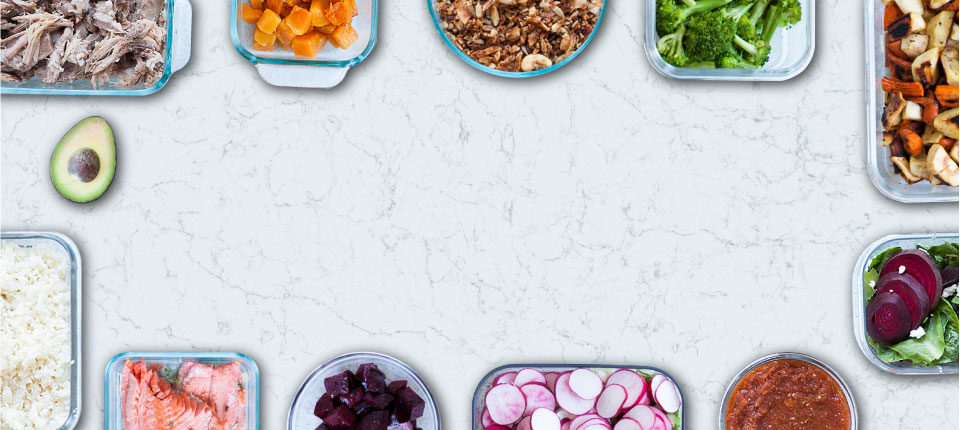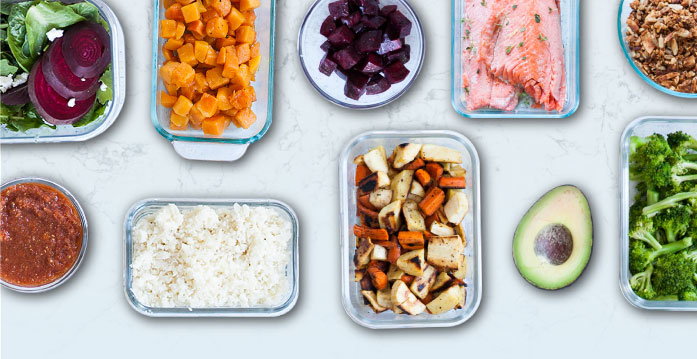When budgeting for meals, there are usually three main issues: Time, quality, and money.
If two are ideal, the third will often not be. So, for example, if you buy food that is both cheap and good quality, like seasonal fruit, then there will be more time needed to process it. Consider yourself lucky if you can find food that takes little time, is high quality, and cheap. Most of the time, you will have to prioritize which two are more important and which issue you can sacrifice.
The following tips focus on low cost and high quality – spending more time on food preparation may be a factor.
1. Skip the bags of prepped food
Assuming you avoid already prepared food like microwave dinners (expensive and dubious ingredients), avoid also the partly prepared food, such as pre-washed salad in a bag and pre-shredded cheese. Yes, buying pre-washed lettuce does save some time, but not *that* much time.
And pre-grated cheese? It loses flavor when exposed to air, goes bad faster, and has added anti-clumping agents like potato starch and cellulose. Just buy a block and take the extra five minutes to grate it yourself.
2. Play the sales/coupons
When there is a significant sale on certain items, stock up. However, only buy groceries that have a long shelf life, such as canned goods, vinegar, frozen items, legumes, and white rice or flour. Don’t stock up on whole grains unless you have a cool place (like an extra fridge, freezer, or root cellar) to store it; whole grains have oils that quickly go rancid and are then bad for you.
If you buy meat or produce on sale, be sure that you’ll have time to process it, such as by freezing.
You can also focus your meal plan for the week around items on sale. Major sale on chicken? Buy a few to roast up on day one, then pick the bones, , and Chicken Avocado Soup (Instant Pot) throughout the week.
3. Beware the sale/coupon siren song
Before you are tempted to stock up on a sale item, however, take a second look at the sale. Often that sale sticker will get your attention, but if you look closer the savings are minimal. Sure, buy one, but it’s not worth stocking up on.
Also worth noting: Sales and coupons are often for items that have been heavily processed. Stick to the real food and don’t let those slashed prices suck you into buying food you are trying to avoid.
4. Organize your fridge and freezer
It is important to organize and label items in the fridge and freezer so they don’t get lost and go bad. The celery buried in the bottom of the produce drawer or the leftovers that were going to be another meal. If they get lost in the back of the fridge or freezer, you haven’t saved money – no matter how cheaply you bought it. In fact, you just poured money down the drain.
Clearly label items. If you have a deep freezer, tape a paper to the outside that details what you put it in. In the fridge, using clear containers that show what is inside helps keep track of all the various leftovers or second meals.
5. Process in-season produce
During the summer, fruit and vegetables are both at their cheapest and most nutritious. Buy a large amount and process them for later use by freezing, canning, or dehydrating.
Try hitting up produce stands and farmers markets at the end of the day and ask for a discount. Also, don’t forget to ask about seconds – nothing is wrong with them except that the produce doesn’t look as perfect as first grade. Another source of cheaper produce are farms where you can pick the produce yourself. And pretty much anyone with a garden has an abundance of zucchini they are trying to get rid of in the summer.
6. Make your own
Making your own foods that you normally buy seems time-consuming and tedious, but many items are much easier than you would expect.
Salad dressing
If you are buying salad dressing, make the bottle in your fridge the last one. Conventional salad dressings are full of questionable ingredients, and ‘healthier’ ones may not be much better. Both are more expensive than whipping up a batch of salad dressing in two minutes.
Click here for seven salad dressing recipes to get you started.
Yogurt
For those who haven’t made yogurt before, it can seem intimidating and time-consuming. Time, however, does most of the work by itself.
Most methods of making yogurt – like this homemade yogurt – require an incubation period and this can happen in slow cookers, Instant Pots, ovens, and even coolers filled with warm water.
There are even special yogurt cultures, called mesophilic yogurts, that don’t require warmer temperatures and can transform milk into probiotic rich deliciousness on the counter, like this matsoni yogurt recipe. Add the culture to milk, stir, and leave it – that’s it. If you don’t eat dairy, you can make your own coconut milk yogurt too.
Spice mixes
You already buy basics like oregano, basil, and paprika – why not combine them to make spices mixes that you normally buy?
This compilation of 14 spice blends will show you how few ingredients are actually needed to cover a range of tastes, from chili seasoning to pumpkin pie spice.
Bread
Before you start rolling your eyes, hear me out. Good quality bread is quickly rising in price. If you skip the air-filled white bread that never goes bad, a good loaf can set you back – and get eaten in a flash.
The no-knead method of baking bread came onto the scene a few years ago and revolutionized homemade bread for busy people. You literally just mix the ingredients, let it do its thing for a number of hours, and then come back when you’re ready to shape it and bake it. No more kneading dough for half an hour for an artisan loaf. Try this simple recipe for no-knead bread or you can go the extra mile and even make a sourdough no-knead bread to really impress yourself.
Nut butter
Throw nuts in a food processor or high-speed blender, blend, and voila – nut butter.
Some nuts like cashews may need a bit of extra oil but overall making peanut butter or other nut butter is cheaper and super fast.
Condiments
If you really want to save money and have higher quality of ingredients, try making some of your own condiments.
Store bought ketchup is crazy high in sugar; this 5-minute ketchup recipe will save you money and peace of mind. Homemade mayonnaise is another condiment that is so much more healthy than from the store, which is made from vegetable oils. BBQ sauce can be simple or more complex, depending on how much time you want to spend.
7. Buy meat from the farmer
If you live in an area where this is possible, many farmers sell large chunks of meat for cheaper than at the grocery store as well as higher quality. A half a side of beef may seem like a lot, but if you have the space to freeze it, that meat will last your family all year. If the amount the farmer sells is too large for you, split it with a few friends.
Don’t forget about lamb, pork, or ‘bulk’ poultry. Ask around for recommendations, or try websites like Eat Wild or Local Harvest to find local farmers.


